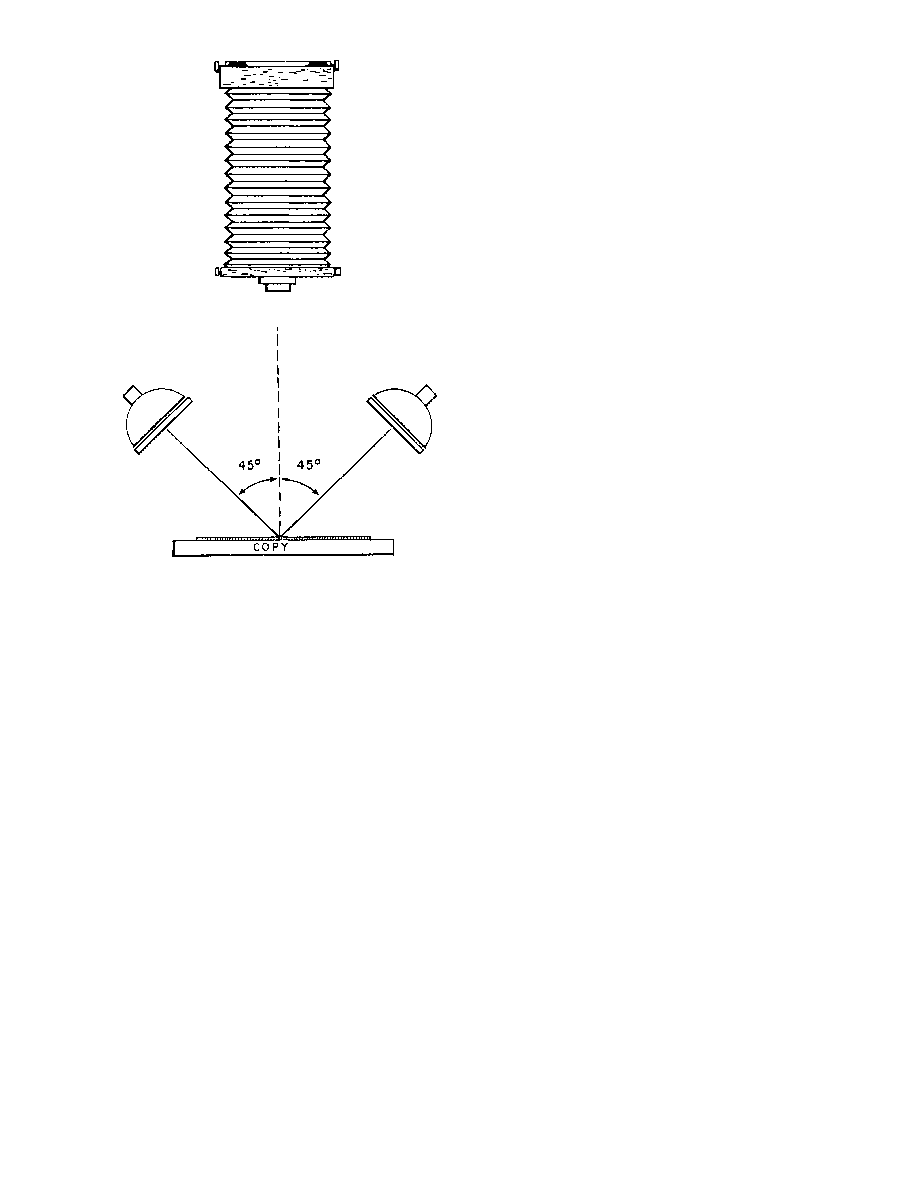
DOFMaster
for Windows
On-line
Depth of Field
Calculator
DOFMaster for Mobile Devices
On-line
Depth of Field
Table
Hyperfocal
Distance Chart
Articles
FAQ
Recommended
Books
Support
Contact
Links
Home
for Windows
On-line
Depth of Field
Calculator
DOFMaster for Mobile Devices
On-line
Depth of Field
Table
Hyperfocal
Distance Chart
Articles
FAQ
Recommended
Books
Support
Contact
Links
Home
As an Amazon Associate I earn from qualifying purchases.
![]()
When the camera is not designed with a rising, falling,
to align the original with the optical axis of the lens.
uneven density, which are hard to print. This is true
whether the original is illuminated by daylight or
artificial light. Uneven illumination can be caused by
improper placement of artificial lights in relation to the
copyboard or by improper placement of the original in
daylight.
general use (fig. 8-3). At this angle, a minimum of
unwanted reflections from the surface of the original
occurs. However, depending on the type of surface of
strokes that produce reflections. These reflections may
be reduced somewhat by placing the lights at an angle
greater or lesser than 45-degrees.
original completely. Movable lights should not be
positioned so far from the copyboard that the intensity
of the illumination falling on the original is greatly
gray card on the original and taking a reflected light
meter reading from the card. Do not allow the shadow
of the meter or your hand to influence the reading. When
sheet of photo paper) can be used, but you must
compensate your exposure by two f/stops. Reflected
light from the four corners and center area of the original
should read the same light values.
bright day or open shade. Evenness of daylight
is completely in direct sunlight or in diffused daylight,
and no shadows are cast on the original.
may still appear in the copy if a wide-angle lens is used.
This is caused when the light transmitted through the
center of the lens is more intense than the light
transmitted near the edges of the lens. When the entire
angle of view of the wide-angle lens must be used, more
illumination to the edges of the original is needed to
compensate for the falloff of light at the edges of the
lens. This can be achieved by turning the lights slightly
toward the edges or by moving the lights close to the
edges. The amount of light increase necessary for the
edges of the original is best determined by conducting
exposure tests with the type of film being used.
is more visible in a copy produced with an extremely
high contrast film because of the limited exposure
latitude of the emulsion.
Basic Photography Course

As an Amazon Associate I earn from qualifying purchases.
WWW.DOFMASTER.COM
© 2006 Don Fleming. All rights reserved.
© 2006 Don Fleming. All rights reserved.